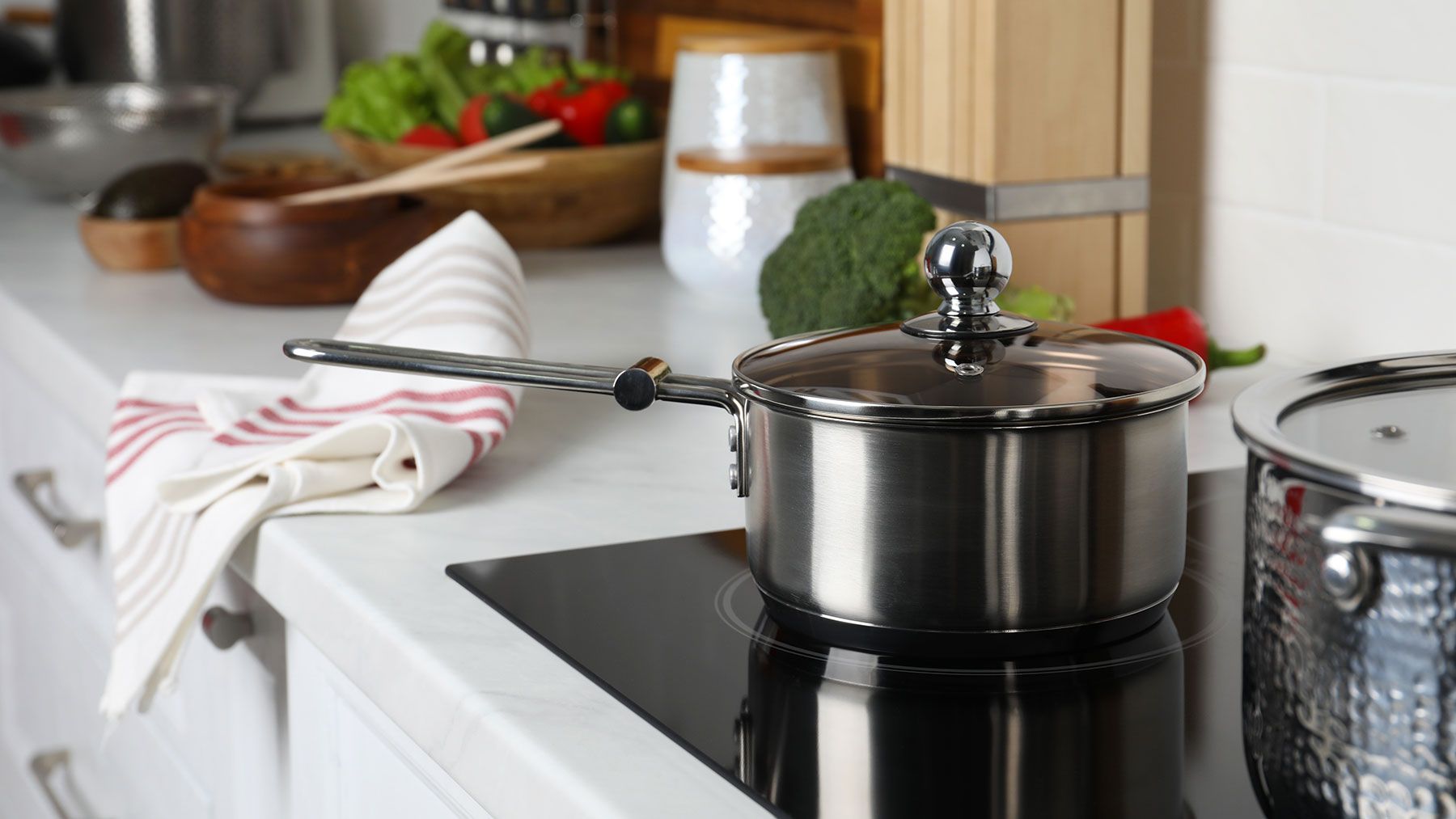Those blackened aluminum pans sitting in your kitchen cabinet aren’t ruined, they’re just misunderstood. While aluminum cookware is lightweight and conducts heat beautifully, it’s notorious for developing dark stains and discoloration that seem impossible to remove.
Aluminum darkens for specific reasons: high heat exposure, burnt food residue, reactions with acidic foods, and incorrect cleaning methods. But there’s a simple, effective solution sitting in your pantry right now you can use to restore aluminum’s shine without damaging the metal.
1. Basic cleaning comes first
(Image: © Shutterstock)
Before tackling discoloration, start by properly cleaning your aluminum pan to remove loose debris. This basic cleaning prepares the surface for the stain-removal treatments.
Ensure the pan has completely cooled, then rinse it with warm water to remove any food particles. Fill your sink with warm water and a few drops of dish soap, then let the pan soak for several minutes to loosen residue.
Next, clean the pan with a non-abrasive sponge, then rinse thoroughly with warm water.
2. Baking soda works like a charm
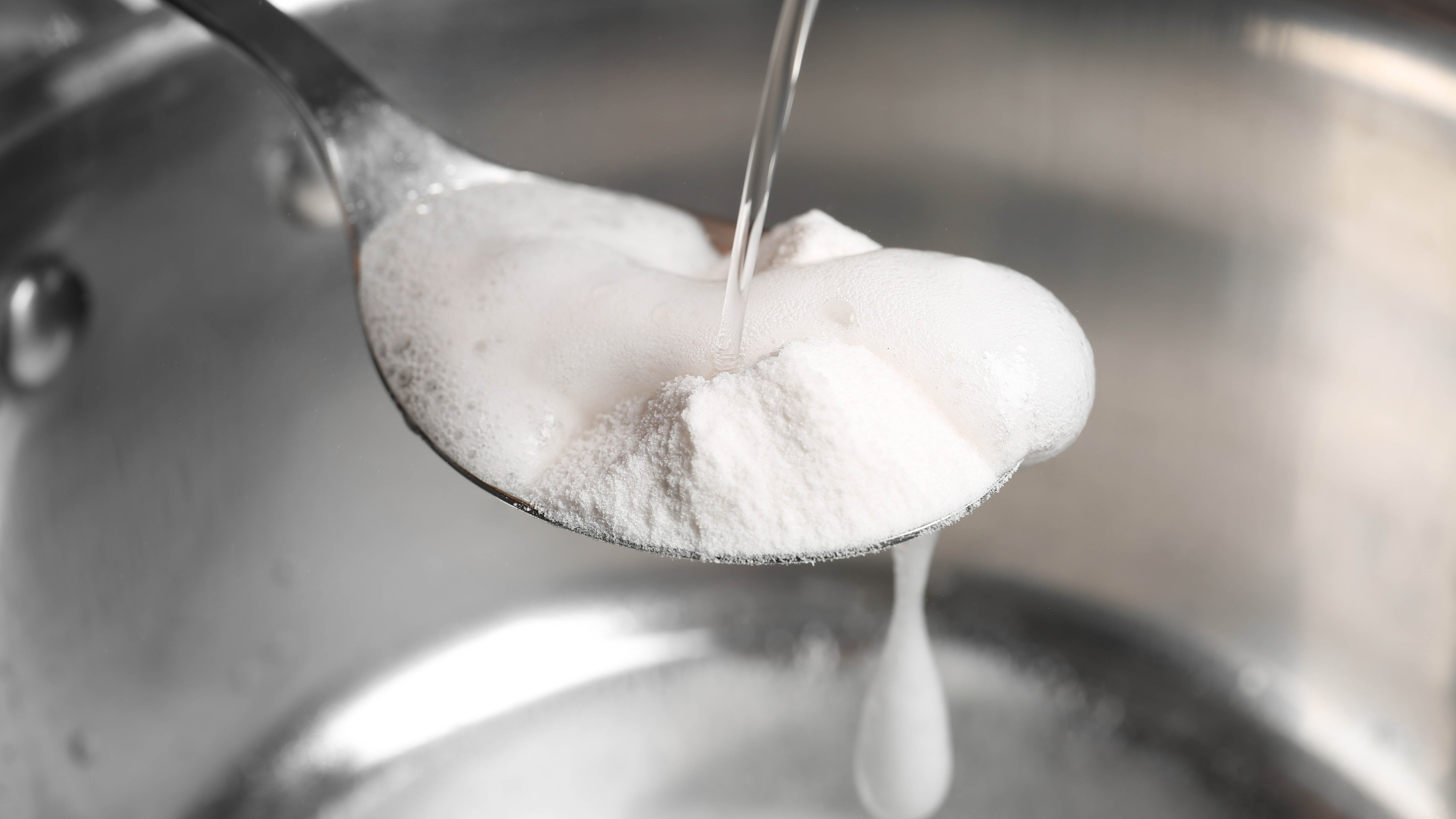
(Image: © Shutterstock)
The most effective solution for restoring discolored aluminum is ordinary baking soda — a $1 pantry staple that works better than expensive specialty cleaners.
Create a simple cleaning paste by mixing baking soda with just enough water to form a spreadable consistency. Then simply apply this paste to the blackened areas of your aluminum pan using a non-abrasive sponge or soft-bristled brush.
Gently work the paste into the discolored surface using circular motions. The mild abrasiveness of baking soda removes stains without scratching, while its alkaline properties help break down the oxidation that causes blackening.
3. Try the boiling trick for stubborn stains
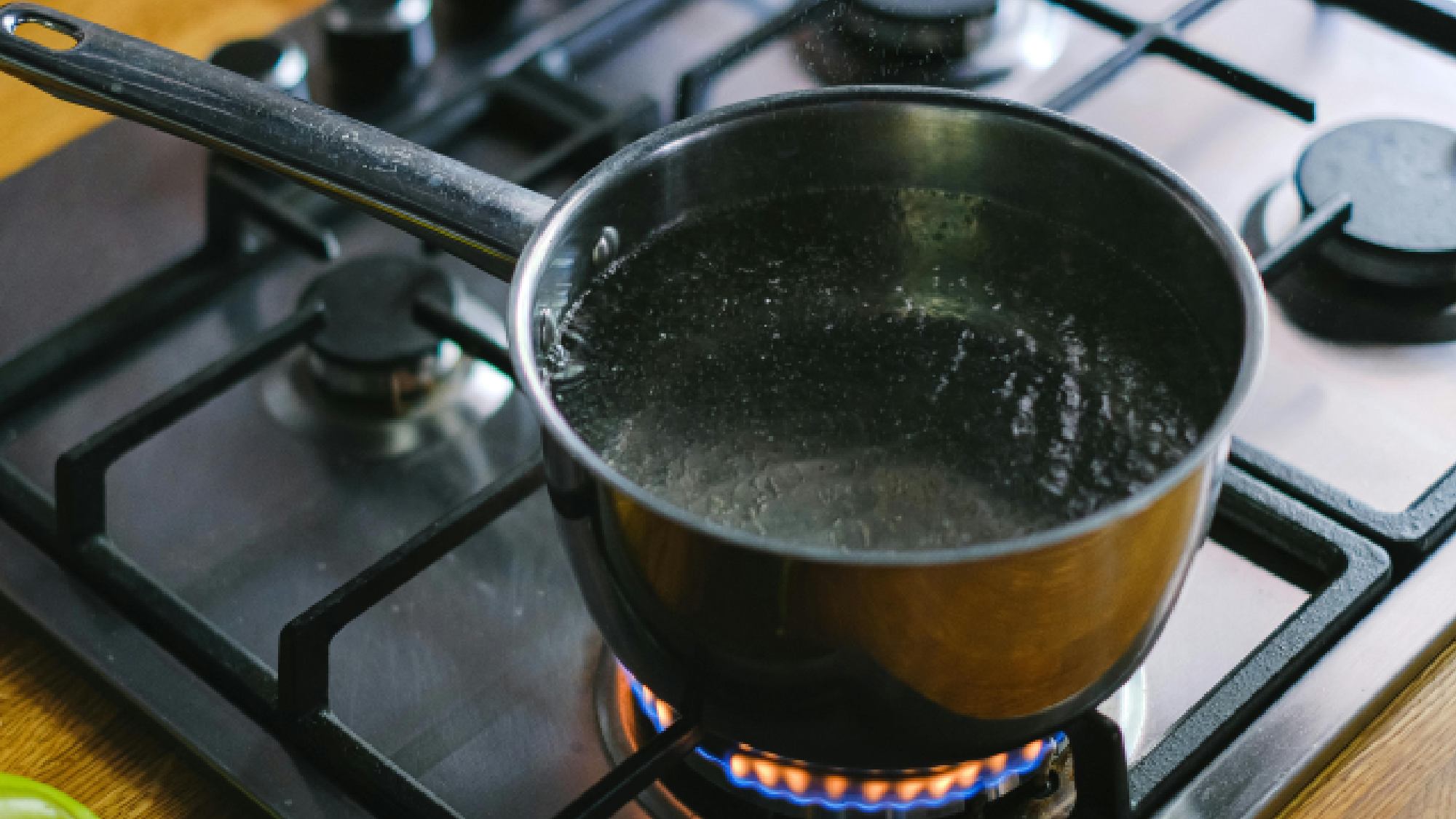
(Image: © Pexels)
For particularly stubborn discoloration that won’t budge with the paste method, try this more powerful approach.
Fill your stained aluminum pan with water, add 2 tablespoons of baking soda, and bring it to a boil. This allows the solution to penetrate deeper into the oxidized surface. Let the baking soda solution simmer for about 10 minutes.
After cooling, wipe the interior with a non-abrasive sponge — you’ll see the blackened areas lift away with minimal effort. For exterior staining, make a paste as described earlier and apply it to the outside of the pan.
4. Salt offers another powerful solution
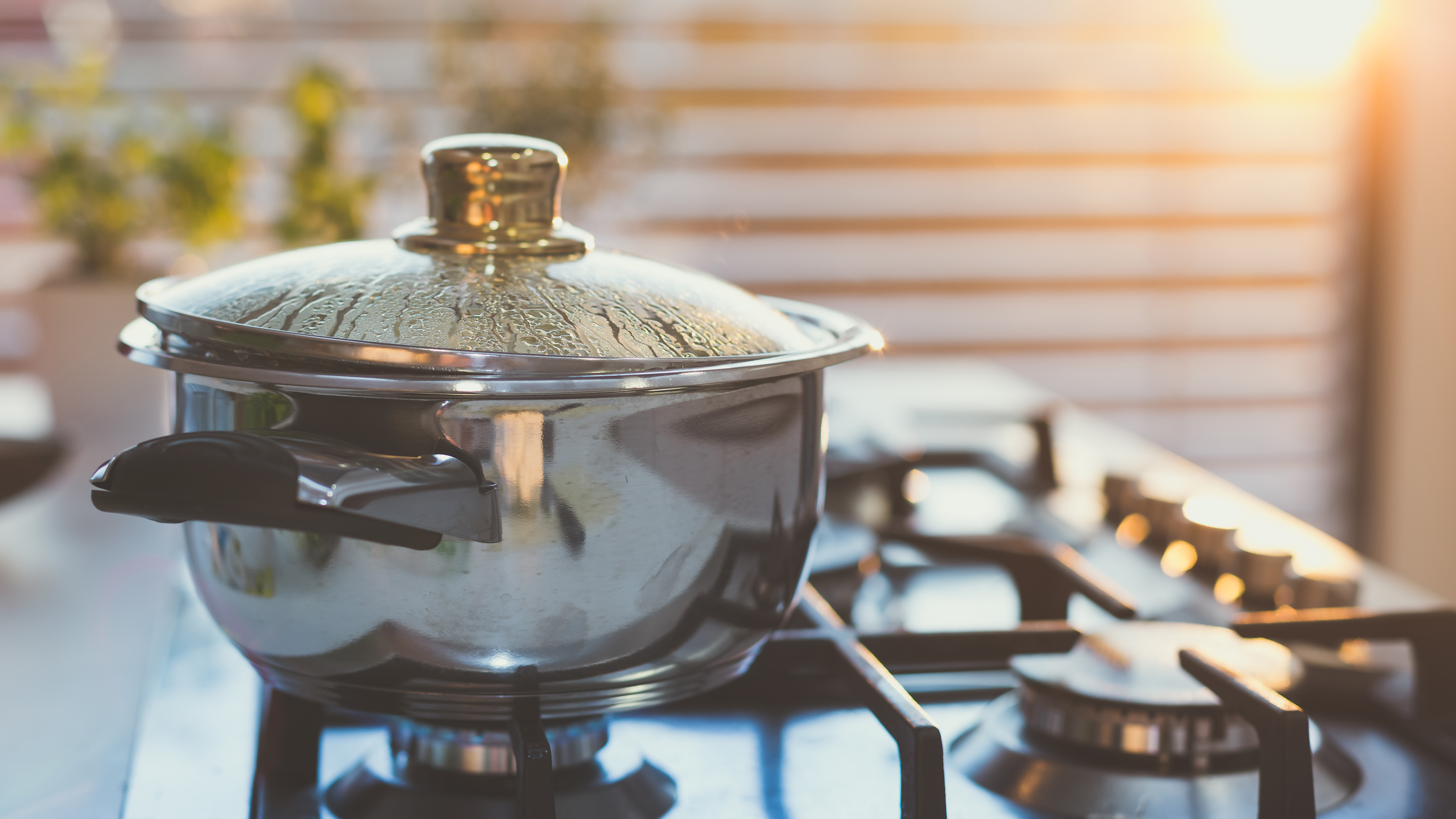
(Image: © Shutterstock)
If you don’t have baking soda on hand, table salt provides an effective alternative for removing stubborn stains from aluminum cookware.
Add water to the stained pan along with a few tablespoons of salt. Bring the solution to a boil and let it simmer for several minutes before allowing it to cool completely.
The salt creates a gentle abrasive action that helps lift away discoloration when you wipe the pan with a sponge. This method works particularly well for removing burnt-on food residue that contributes to blackening.
5. Keep your aluminum pans looking new
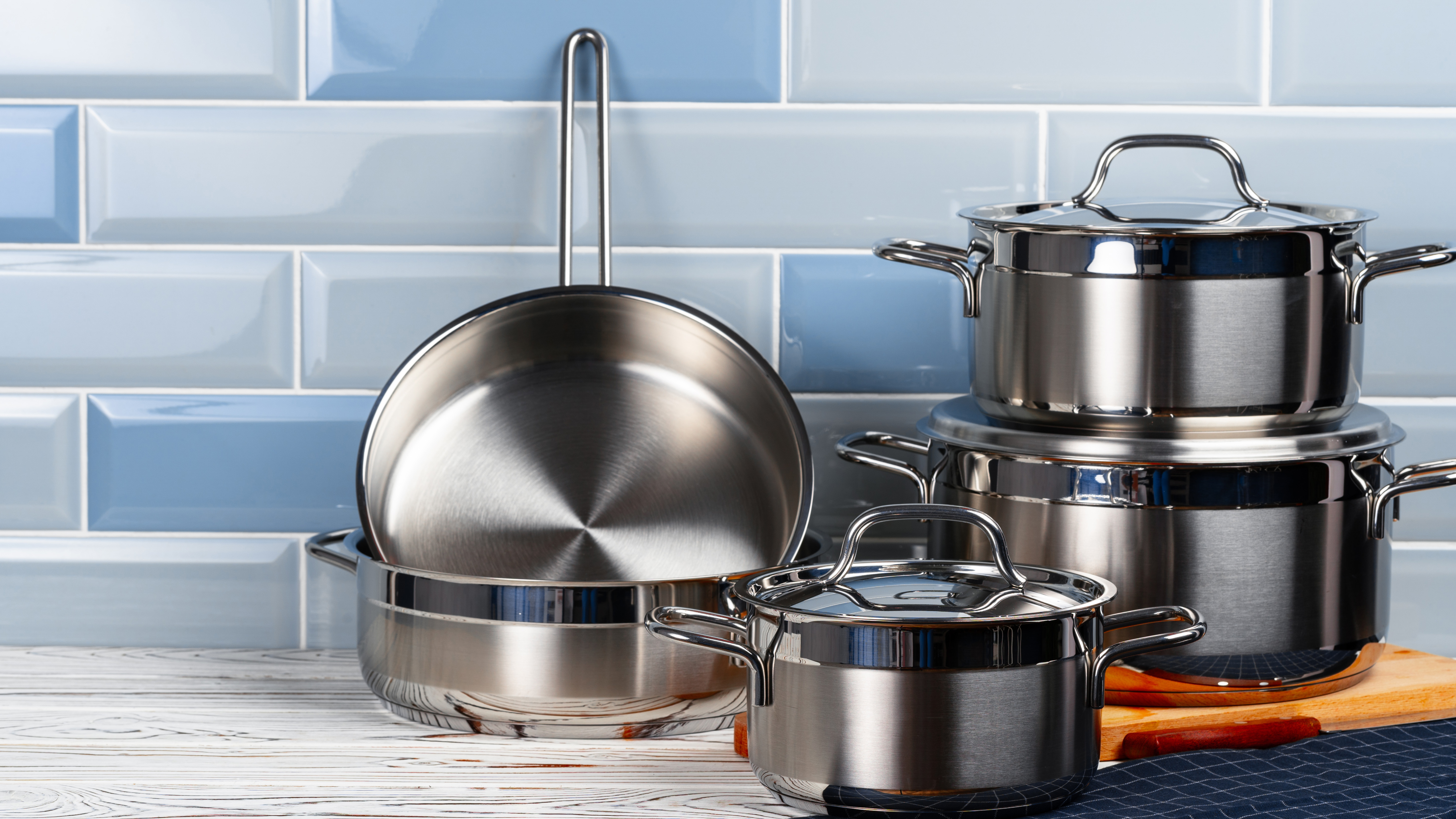
(Image: © Shutterstock)
Maintain your restored aluminum cookware by adopting a few protective habits. Cook at medium heat whenever possible, as extreme temperatures accelerate oxidation.
Consider using stainless steel or cast iron for highly acidic foods like tomato sauce, which can react with aluminum. If you’re shopping around for a new pan, our best iron skillets guide can help you make an informed decision.
Always hand wash aluminum pans with gentle dish soap rather than using the dishwasher, where harsh detergents can darken the surface. Also, dry your cookware immediately after washing to prevent water spots and mineral buildup.
With these simple practices and occasional treatments, your aluminum pans can remain bright and shiny for years to come.
Follow Tom’s Guide on Google News and add us as a preferred source to get our up-to-date news, analysis, and reviews in your feeds. Make sure to click the Follow button!

